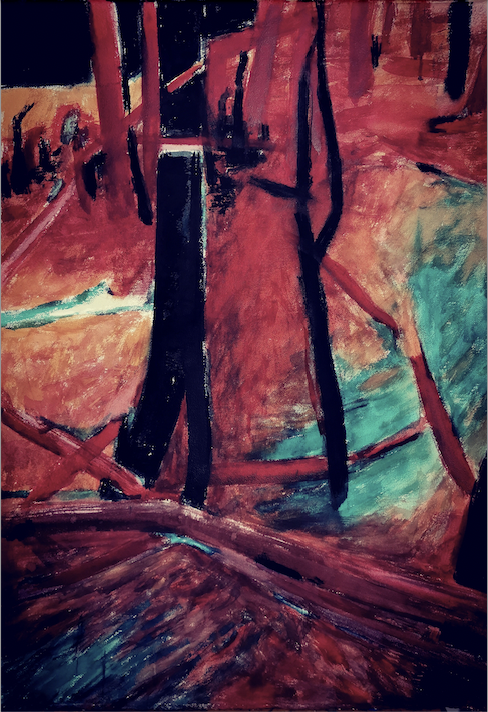Angie Pai: Why You Like This
6 April - 21 May 2023

Zou Yinong
Rebirth 20
2020
Watercolour on paper
153 x 103 cm
$4,000.00 (gst inc.)
Born in Jiaxing, Zhejiang Province, China in 1959, artist Zhou Yinong has seen his fair share of change and renewal. In 1976, at the age of 16, Yinong began learning Chinese ink painting, calligraphy and folk art. This was the end of China’s difficult years, during which, traditional artforms were not widely encouraged. Zhejiang, however, is a region rich in artistic history, with important local artists including Pu Hua (1834-1911), Feng Zikai (1898-1975) and Mu Xin (1927-2011) to name just a few. Added to this background is Zhou Yinong’s interest in diverse aspects of European Modernism, with interests ranging from Henri Matisse (1869-1954) to German Expressionism. Notably, Matisse was influenced by his encounters with the art of Asia, Japan in particular, seeing colour as a vehicle for emotional expression. Recognising the synergies, Yinong has sought to synthesise Chinese ink and brush painting with European modes, thereby creating a new form of painting born of cross-cultural influences. Following studies at Yangzhou Academy of Fine Arts, in 2016 he began presenting solo exhibitions in China and has continued painting and exhibiting internationally. Recent field trips have included painting in Gansu Province, China and in East Gippsland, Australia.
Bushfire / Rebirth
Artist Zhou Yinong’s new body of watercolours, titled ‘Bushfire / Rebirth’ play with ideas of renewal and change in both nature and culture alike. Inspired by visits to rural Victoria, the works chart changes wrought by the unprecedented fires that occurred in the region of East Gippsland.
According to Forest Fire Management Victoria:
In the 2019-20 fire season Victoria endured extreme fire conditions with over 1.5 million hectares burnt, immeasurable impact on unique environments, 420 houses lost, and five fatalities. Communities in East Gippsland were isolated for weeks as thousands of kilometres of roads and critical infrastructure were rendered unserviceable. In addition, the bushfires have had a significant impact on wildlife and biodiversity.
Faced with the scale of the devastation, Zhou Yinong took to painting the blackened landscape, which in the aftermath of the fires appears devoid of life. In these conditions, the normally verdant Eucalypts are reduced to charcoal striations. Reminiscent of Chinese calligraphic strokes, the forms were vividly transcribed into Zhou’s new paintings. Returning months later, Zhou Yinong was struck by the extent of the regrowth, with new shoots contrasting against the sombre background. The resulting body of paintings outlines the harsh natural conditions, while highlighting the dynamic play of colour and form. The contrast between devastation and beauty is vividly apparent in these works.
Here the predominance of red, black and green reveal the elemental conditions of fire, death and renewal.
While many in Australia will be familiar with the patterns of bushfire and regrowth, in recent years climate change has ushered in a new era with temperatures reaching to the extreme. Wildfires have long been a necessary feature of the Australian ecology, but now, the ferocity of the burn has gone beyond conventional tolerances. Equally, fires in wilderness areas are becoming a feature of life across the planet, whether in Europe, the United States or China. Conscious of these realities, Zhou Yinong envisages his work as a response to a worldwide challenge. How to deal with the impacts of climate change in an overpopulated planet? In the 2020s, global scale challenges became all too personal with the arrival of COVID-19, sending many communities into lockdown. For Yinong, the limitations on travelling out of China meant he was unable to return to Australia until 2023, where again he visited the site of the East Gippsland fires. Seen together, the three bodies of paintings provide a vivid response to a landscape in constant transition.
Dr Damian Smith
President, Australian Chinese Art Research Institute